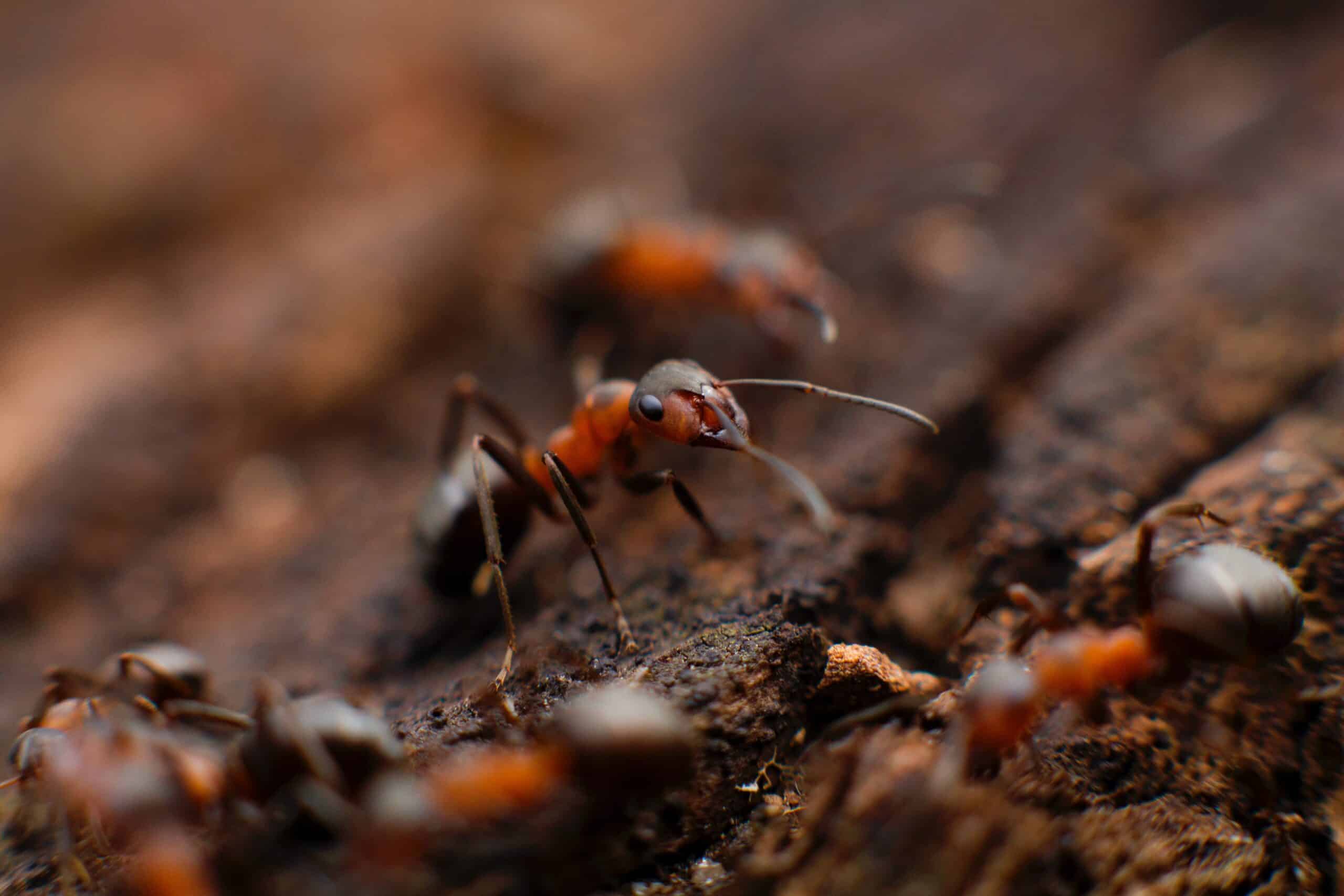As we transition from the sizzling days of summer to the cool embrace of autumn, another transition is also underway – the migration of pests seeking refuge in our homes and businesses. Fall pest control becomes a pivotal task during this seasonal shift, as insects and rodents start searching for warmth, sustenance, and shelter.
In this comprehensive guide, we’ll delve into the essential steps to ensure a pest-free fall season. With temperatures dropping and days growing shorter, common pests like ants, spiders, rodents, and others begin to seek sanctuary indoors. Your home or business, with its myriad entry points and cozy corners, can inadvertently become their chosen haven.
We understand that maintaining a pest-free environment is not merely a matter of comfort; it’s also about safeguarding your space’s health and structural integrity. Pests can contaminate food, inflict property damage, and pose potential health risks to occupants. By taking proactive measures and following the fall pest control tips outlined in this guide, you can savor the beauty of autumn without the specter of pest infestations.
From sealing entry points and proper food storage to yard maintenance and seasonal cleaning, we’ll cover a range of strategies to fortify your defenses against these unwanted intruders. Whether you’re a homeowner, property manager, or business owner, these tips are tailored to suit your unique needs.
So, let’s embark on this journey through the world of fall pest control, ensuring that your space remains a sanctuary free from unwelcome guests. With a bit of preparation and diligence, you can revel in the pleasures of autumn without the worry of a pest invasion.
The Transition to Fall and its Impact on Pest Activity
The transition from summer to fall is a captivating time of year, marked by the gradual shift from scorching days to cooler temperatures and the emergence of vibrant autumn foliage. While humans and nature revel in the beauty of this season, it’s essential to acknowledge the less-welcomed transition that occurs during this time – the change in pest activity.
As summer bids adieu, pests too begin to undergo a transformation in their behavior. The warmer months are a playground for many insects, including mosquitoes, ants, and flies, which thrive in the heat and abundant food sources. However, as fall approaches, these creatures must adapt to the changing conditions.
One significant factor influencing pest activity during the fall is the drop in temperatures. As the weather cools, many insects slow down, become less active, or even enter a state of hibernation. This means that certain pests, like mosquitoes, tend to dwindle in numbers as they become less active in search of blood meals.
Conversely, other pests, particularly rodents, become more active during the fall season. As the temperature drops, mice and rats seek warm and sheltered spaces for nesting, and our homes and businesses are prime targets. Their increased activity can lead to more frequent encounters with these unwanted guests.
Fall also brings about changes in food availability. Pests that rely on outdoor food sources, such as flies and wasps, become less bothersome as these resources become scarcer. However, they may attempt to enter our spaces in search of sustenance, especially if they sense the aroma of food indoors.
Understanding the dynamics of pest activity during the fall is crucial for effective pest control and prevention. By recognizing that different pests exhibit varying behaviors and tendencies in response to seasonal changes, homeowners, property managers, and business owners can take proactive steps to safeguard their spaces from infestations during this transitional period.
Let’s jump into some tips that will help you set up your home for success as we move into the Autumn season.
Tip 1: Seal Entry Points
Pests are experts at finding their way indoors, and they often exploit even the tiniest cracks and gaps to gain access. Here’s how you can tackle this crucial tip:
- Identification: Begin by conducting a thorough inspection of your property, both inside and outside. Look for any potential entry points that pests could use. Common culprits include gaps around windows and doors, cracks in foundations, openings around utility pipes, and damaged screens on vents.
- Caulking and Sealing: Once you’ve identified these entry points, it’s time to get to work. Use high-quality caulking to seal gaps and cracks around windows and doors. Replace or repair damaged screens and ensure they fit securely. For larger openings, consider using weatherstripping, which not only seals gaps but also improves energy efficiency.
- Reinforce Doors and Windows: Installing door sweeps and thresholds can provide an extra layer of protection. Ensure that doors and windows close tightly, leaving no space for pests to sneak in.
- Vent Maintenance: Check vents for proper screening and consider installing mesh or hardware cloth if needed. This prevents pests like rodents from entering through these openings.
- Inspect Utility Entry Points: Pay special attention to utility entry points, such as where pipes and cables enter the building. Use steel wool or copper mesh to block these openings, as rodents can easily chew through softer materials.
Tip 2: Proper Food Storage
Proper food storage is paramount in fall pest control. As temperatures drop, pests like ants, rodents, and pantry beetles become more determined to find sustenance indoors. To thwart their efforts, ensure all pantry items are stored in airtight containers. This simple act not only keeps your food fresh but also prevents pests from accessing their favorite buffet.
Cleanliness is also a factor. Promptly clean up spills, crumbs, and food residue, as even the smallest morsel can attract unwanted guests. Pay extra attention to pet food storage, keeping it sealed and secure.
Tip 3: Yard Maintenance
Maintaining your yard is a powerful preventive measure against fall pests. As leaves fall and create hiding spots, clear debris and leaf piles regularly. Trim vegetation, especially if it’s close to your home, as overhanging branches provide convenient bridges for pests. Regular lawn care keeps your yard less hospitable for pests, making it an unattractive place for them to nest.
Addressing standing water is another critical aspect of yard maintenance. Mosquitoes, in particular, breed in stagnant water. Empty containers that can collect rainwater and ensure proper drainage to discourage their breeding.
Tip 4: Inspection and Early Detection
Routine inspection and early detection are fundamental to fall pest control. By actively looking for signs of pest activity, you can catch problems before they escalate. Keep an eye out for droppings, gnaw marks, damaged goods, or unusual odors, which can all indicate a pest presence.
Swift action is crucial if you suspect an infestation. By addressing the issue promptly, you prevent pests from multiplying and causing more significant damage. Don’t hesitate to seek professional pest control services if needed.
Tip 5: Firewood and Outdoor Storage
Firewood and outdoor storage are often overlooked sources of pest trouble. Storing firewood too close to your home can invite pests like termites and ants. When bringing firewood indoors, inspect it for any hitchhiking pests.
Elevating outdoor storage items and keeping them sealed in containers or sheds can prevent pests from finding shelter. Ensure outdoor furniture is cleaned and inspected for signs of pests before storing it for the season.
Tip 6: Seasonal Cleaning
A thorough seasonal cleaning is an essential component of fall pest control. By removing cobwebs, egg sacs, and dust, you eliminate potential hiding spots for pests. Decluttering also reduces the number of potential nesting sites.
Deep cleaning kitchen appliances, cabinets, and pantries ensures that food residue doesn’t attract pests. Regular vacuuming and sweeping in all areas of your home, including less frequently used spaces like basements and attics, can help you maintain a pest-free environment.
Tip 7: Pest-Resistant Landscaping
Your landscaping choices can either encourage or discourage pests. Opt for plants that deter pests, such as marigolds, lavender, and rosemary. Proper mulch and gravel usage can make it challenging for pests to burrow near your foundation.
Consider seeking advice from professional landscapers who specialize in pest-resistant landscaping. They can help you create an environment that discourages pests from taking up residence around your home.
Conclusion
Fall pest control is essential for maintaining a pest-free and comfortable living or working space during the autumn season. By following these tips, you can effectively seal entry points, store food properly, maintain your yard, inspect for pests, manage firewood, conduct seasonal cleaning, and create a pest-resistant landscape. These proactive measures not only keep pests at bay but also contribute to the overall cleanliness, health, and aesthetics of your environment. By taking these steps, you can fully enjoy the beauty and coziness of fall without the intrusion of unwanted guests.

